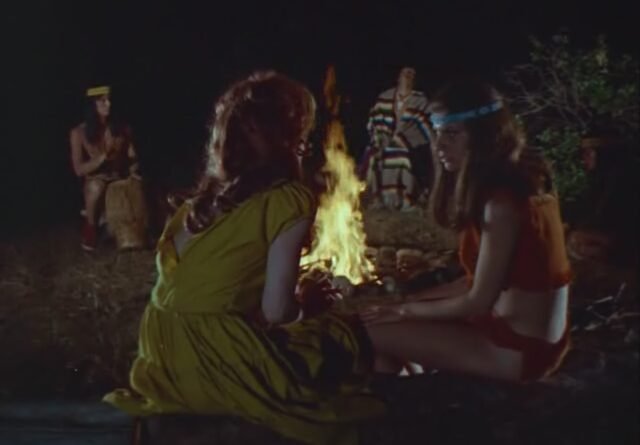Hidden Gems: The Ramrodder (1969)
The Ramrodder, 1969 (Jim Gentry/Bobby Beausoleil) E.S.I. Productions
The Ramrodder is a Holy Grail of modern cinema. It’s the movie being guarded by the old knight in a small room that can only be accessed by stepping on the right stones and having faith enough to walk on an invisible precipice and avoid vivisecting circular saw blades. It’s worth the danger, probably more so than the actual cup of Christ. The reason it’s worth the danger is simple: nobody wants you to see this movie.
Nobody except Something Weird Video, which, I have to assume, found a pristine negative, or maybe a really good telecine transfer and put the thing out on DVD back in 2003. After the initial 1969 U.S. release, The Ramrodder got distribution in Canada, France, and Australia. The original distributor, ESI Productions, was known for, I guess you’d call them “nudie films,” the late ’60s equivalent of softcore or erotic films; not hardcore (that’s a serious distinction) but a feature film with tons of nudity and sexual situations.

Yet The Ramrodder plays like an adult film. Five seconds after the opening titles are finished, we get copious nudity: a bevy of beautiful (not to mention voluptuous) Indian maidens bathing in a pond. I’m sorry, I have to refer to Native Americans as “Indian,” because that’s how they’re referenced in the movie. If that triggers you, fasten your seatbelts! It’s gonna be a bumpy ride! One of the major “complaints” of the depiction is that many of the naked Indian girls have armpit hair, when apparently it’s conventional wisdom American Indians don’t have body hair.
It’s an interesting peccadillo, considering I don’t think The Ramrodder would ever be praised for its authenticity. There is nudity and/or sex every five minutes, briefly interrupted by plot. The plot revolves around Cowboy Rick (Jim Gentry), who is sentenced by an Indian tribe to die for the rape and murder of their princess, Cochina (Catherine Share). The problem is he didn’t do it, and he is being punished for the crimes of another white man (a seriously ugly mofo with missing teeth), which just goes to show it doesn’t matter what the color your skin is, you will be profiled!
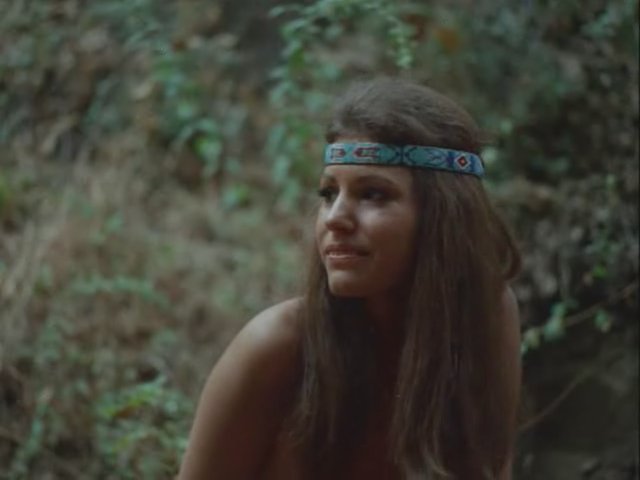
Whether it’s an L.A. cop or a Indian Chief. Eventually, he is exonerated when Tuwanna (Kathy Williams), the Chief’s daughter, steps forward to alibi Cowboy Rick. It seems they were sharing a romantic tryst at the time of the murder. By movie’s end, “Saddle-Tramp” (Bobby Beausoleil), Cochina’s brother, and his friends get bloody revenge on the ugly mofo. It is implied (though not specifically shown) that his penis is amputated, and he is stabbed to death. A fitting (if gross) punishment for the crime of rape.
I had first heard about The Ramrodder from Karina Longworth’s You Must Remember This podcast. In 2015, Longworth devoted an entire season of her podcast to the Manson murders. In the sixth episode, Longworth profiled Bobby Beausoleil. Though she is oddly dismissive of Beausoleil as a screen presence, Longworth makes connections between Beausoleil and Kenneth Anger (the experimental filmmaker who regarded the good-looking young man as his muse) and Dennis Hopper, and eventually Terry Melcher.
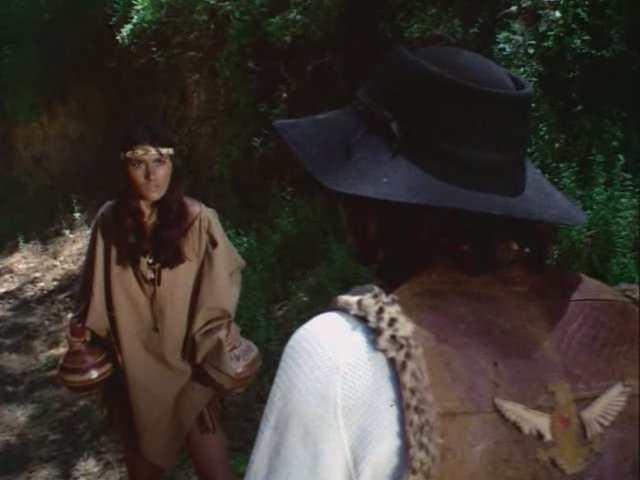
Indeed, Beausoleil’s nickname among Manson acolytes was “Cupid.” To hear members of the family tell the story, Manson kept him around because he had a knack for procuring attractive girls Manson could then pimp out to drug dealers and dune buggy mechanics in exchange for products and services. Beausoleil would appear in Anger’s Invocation of My Demon Brother as well as compose and perform the music (while in prison) for Anger’s Lucifer Rising.
Beausoleil would also appear in Robert Carl Cohen’s Mondo Hollywood, which would feature Jay Sebring, who was murdered by members of the Manson family. Longworth dismisses Manson’s ties to Hollywood, and instead (in an inappropriately elitist tone) describes Manson as a pathetic hanger-on, missing the boat on breaking into the musical scene. Hollywood is a very, very small town.

I’ve always contended most of the key players knew Manson, partied with him, and then disconnected from him after his involvement in the murders was made public. Dennis Wilson made no bones about stealing Manson’s music and allegedly “paying” him with a motorcycle, one of his framed gold records, and the use of his pad. That’s not how you conduct business, and while Manson might come over as a lunatic, he still would’ve had an excellent lawsuit against Wilson.
The Ramrodder was filmed on location at the Spahn Ranch during the Manson family’s “residency.” I don’t quite know how the dates line up, but it’s possible Beausoleil and Share were shooting the movie and were then befriended by Manson. They were actors in a movie, and say what you want about The Ramrodder, it was professionally shot. The photography is actually quite beautiful. The production design was quite good as well. The Ramrodder is not nearly as bad as some people would want you to believe.
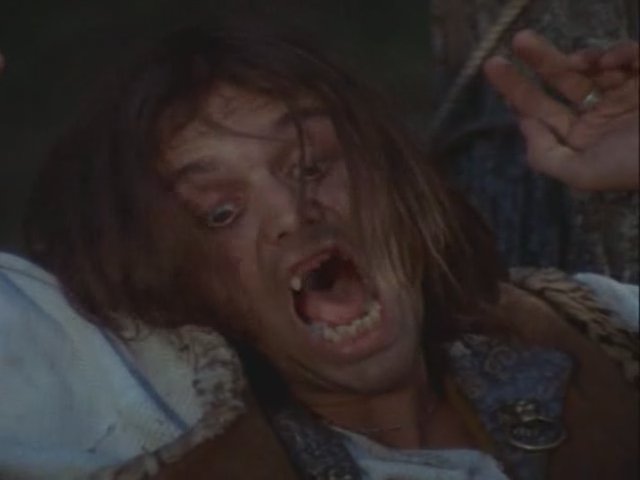
A few months later, Al Adamson came to the Spahn Ranch to shoot a motorcycle exploitation movie titled Satan’s Sadists with Russ Tamblyn, which featured several members of the Manson family behind and in front of the camera. Several films were shot at George Spahn’s Movie Ranch, but nobody ever seems to pay any mind to a group of sex-crazed, violent cultists looking to start World War III. Weird.
I’m fascinated by the idea of actors and musicians joining a cult and killing people. I don’t know why. Prosecutor Vincent Bugliosi (and Longworth in her podcast) goes out of his way to present these people as completely out of their minds, spitting theories of eugenics and race wars while at the same time holding down jobs, making music, and making movies. They paint established celebrities like Dennis Wilson and Dennis Hopper as victims.

I’m not saying they (and those who were murdered) deserved what happened to them, but there is a danger in flying too close to a volatile, destructive sun and celebrity is the slipperiest of slopes. I can’t believe I just combined two metaphors! Several months after shooting was completed, Beausoleil was living with music teacher Gary Hinman at his house in Topanga Canyon. Manson was hard-up for money and asked Beausoleil to take anything he could from Hinman’s house including Hinman’s car.
Beausoleil (with other family members Mary Brunner, Susan Atkins, and Bruce Davis) tied up Hinman, stabbed him repeatedly and mutilated his body. Beausoleil took off in Hinman’s car but pulled over to the side of a road to sleep. He was picked up by cops days later after they discovered his blood-soaked knife in the wheel well of the vehicle. Being a typical actor and musician, Beausoleil was not the sharpest knife in the drawer (sorry).
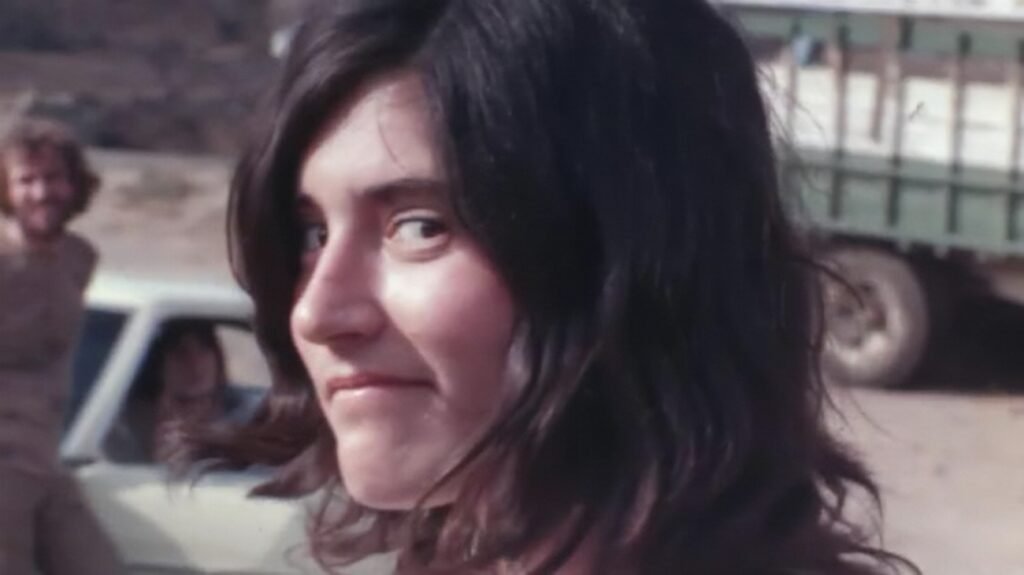
It was rumored Manson had his family conduct the Tate/La Bianca killings so that they would appear to be copycat murders and Beausoleil would be let off the hook. It didn’t work out that way. Contrary to popular belief, The Ramrodder was not released to capitalize on the presence of a murderer in the cast. It was released January 23, 1969 in adult cinemas in Los Angeles. It would’ve been all but forgotten if not for Beausoleil and Share. Ed Forsyth would go on to direct a handful of exploitation films in the ’70s, including Superchick (wonder what that’s about) and the hilariously titled Chesty Anderson U.S. Navy. He died in 2004.
Bobby Beausoleil recently had his parole request denied by Governor Gavin Newsome and is still residing in Vacaville on the taxpayer dime. Cathy Share (also known as “Gypsy”), who played no active part in any of the murders, served five years for armed robbery and later became a born-again Christian. If the movie does nothing else, The Ramrodder immortalizes a strange, passionately violent time in history, and it’s worth a viewing for that reason alone.

